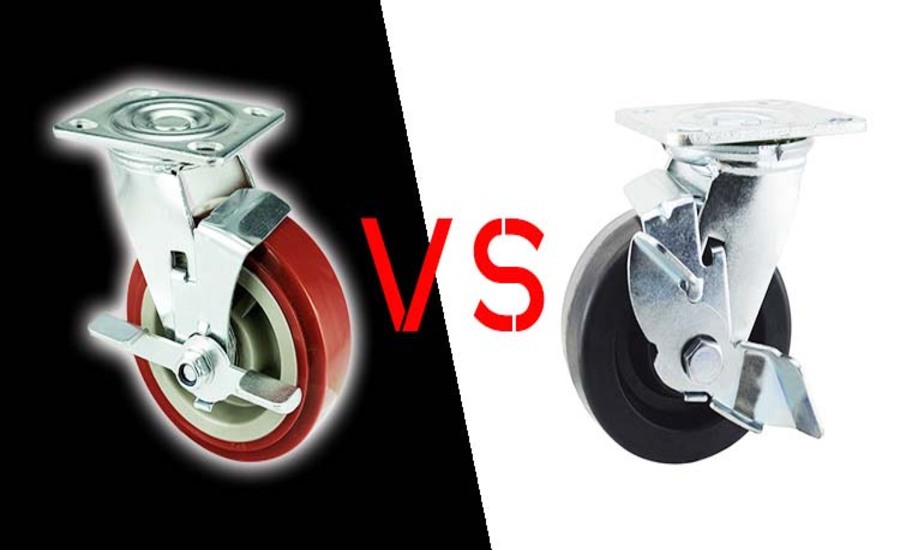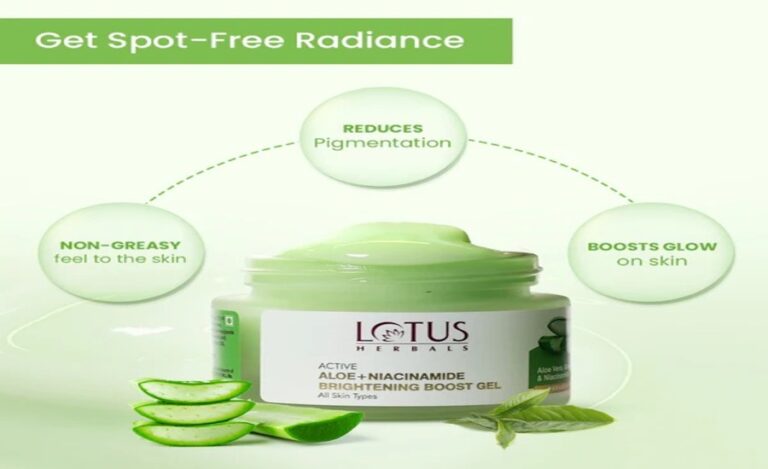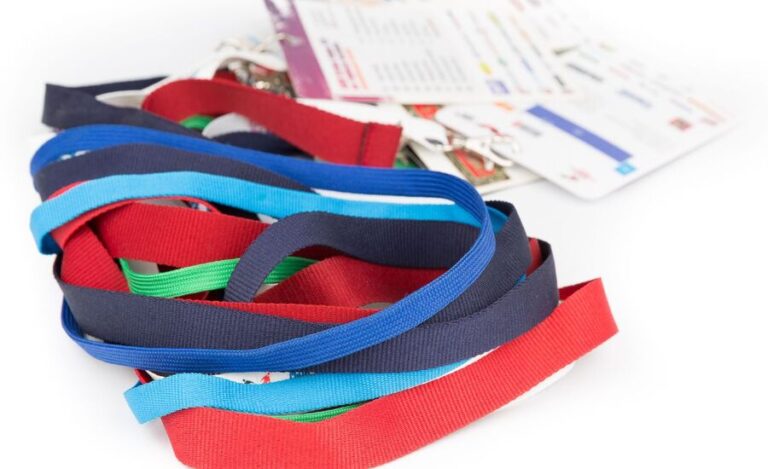Polyurethane vs. Rubber Casters: The Key Differences You Should Know
Choosing the right caster for your particular requirements or application is always tricky. When selected wisely, a caster proves to be a long-term investment. So, whenever we start looking for the available options in the caster industry, the decision usually boils down to the two most common materials: polyurethane and Rubber.
Now, both materials offer distinct advantages and are suitable for specific applications. However, selecting between them requires a complete understanding of their properties, performance, and ideal use scenarios. This article will explore the key differences and ideal applications of these two most common casters to help you make a smart choice.
Material Composition & Structure
Heavy duty polyurethane casters are made from a synthetic polymer. It is a combination of plastic and Rubber, offering each one’s properties in elasticity and firmness at the same time. This quality makes this material suitable for various environments. On the other hand, rubber casters are made from natural or synthetic Rubber and are best known for their flexibility and softness.
Polyurethane: This combination of Rubber and plastic offers more durability and is typically more rigid
Rubber: It is relatively softer, with a spongy texture that provides better shock absorption.
Durability & Longevity
Durability and firmness are major factors that must be considered when choosing the right wheels, especially when looking for heavy-duty industrial use.
Polyurethane Casters: as mentioned earlier, heavy duty polyurethane casters are known for their extraordinary durability and resistance to daily wear and tear, even under heavy loads and challenging environments. They can withstand debris exposure to chemicals, oils and moisture without any substantial degradation. So they can ideally be used in factories, industrial units, warehouses etc.
Rubber Casters: On the contrary, also have their own unique properties and distinct advantages. These somehow offer a reasonably good longevity but not as much as polyurethane. Moreover, they also wear more quickly, especially under heavy loads and challenging environments. Rubber is more prone to cracking, splitting, flattening, etc. Although, they work perfectly for settings where noise reduction is a major requirement.
Load Bearing Capacity
Load bearing capacity indicates how much weight an can sustain without a very critical failure. So, it must be assessed and noted with extreme care and attention to prevent failures and even accidents.
Polyurethane Casters: These kinds of heavy duty polyurethane casters can usually bear way more load as compared to rubber casters. Polyurethane can withstand heavy weights without deforming or compromising its structural integrity. This quality makes them suitable for industrial equipment, heavy machinery, and warehouse carts.
Rubber Casters: On the contrary, rubber casters can sustain comparatively lighter weights. Although they offer smooth and quiet operations, they can easily deform under heavy weights. They also wear more quickly since Rubber isn’t that durable.
Floor Protection
Floor protection is yet another concern in any work environment. Both polyurethane and Rubber have their own unique behavior towards floor protection depending on the type of surface these are being used on.
These heavy duty polyurethane casters are gentle on the floor, at least more than metallic wheels, especially in high-traffic areas where frequent movements can lead to damage. They have non-marking properties and usually don’t leave scuff marks, making them ideal for polished concrete, tile, and hardwood floors.
Rubber Casters: Rubber casters are also considered floor-friendly, but they tend to leave marks on certain spaces, especially on lighter-colored floors. So, they provide excellent grip and can ideally be deployed on outdoor applications where traction is a top priority.
Rolling Resistance & Ease of Movement
Since casters are subject to transporting loads in the caster industry and, they are meant to make our job easy. Rolling resistance is also a factor determining the suitability of . It implies how easily a caster moves across a surface, reducing strain and effect.
Polyurethane Casters: These casters normally have lower rolling resistance and are easier to push or pull, even under heavier loads. This quality makes heavy duty polyurethane casters a perfect choice for settings where productivity and maneuverability are top concerns.
Rubber Casters: Comparatively, rubber casters have more rolling resistance. They somehow offer way better grip, but moving them is slightly harder, especially under heavy loads. This can be an advantage in situations where better control is required but can be a lag in places where movement is more important.
Noise & Vibration Control
Noise control and vibration dampening are critical in certain sensitive working environments like hospitals, labs, offices, and residential settings.
Polyurethane Casters: These casters produce more noise due to their firm structure, especially on hard surfaces. They are somehow quieter than the metal wheels but still create noise, which can be a clear disadvantage at sensitive settings.
Rubber Casters: on the other hand, Rubber is excellent at absorbing vibrations and reducing noise. This quality makes them perfect for settings where smooth and quiet operations are essential. These are also good for outdoor applications and rough terrain.
Chemical & Environmental Resistance
Now this is another important consideration. The setting or environment where your caster will be used best determines which type or material will fit your requirements.
Polyurethane Casters: Heavy duty polyurethane casters are highly resistant to chemicals, oils, solvents, and moisture. These are perfect choices for settings where casters are exposed to these substances. Moreover, they also perform well in moderately higher temperatures, both hot and cold, without compromising their structural integrity.
Rubber Casters: Rubber, which is not that firm a material, cannot withstand such challenging environments and is prone to instant damage from such chemicals, debris, moisture, etc. Continuous exposure to such substances can cause the rubber casters to deteriorate, crack, or swell.
Conclusion
Polyurethane and rubber casters offer unique and distinct advantages but may also have some disadvantages. Choosing the right type for your particular application depends on various factors, most of which have been discussed in detail. In cases where you demand heavy duty operations, longevity, durability, etc, you should go for polyurethane made by some . On the other hand, rubber casters are a saner choice if you need quieter operations, more controlled operation with a strong grip.






